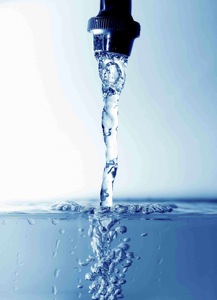- 15 reads

Challenge yourself this summer with these 10 useful tips to eliminate your water waste!
In addition to saving money on your utility bill, water conservation helps prevent water pollution in nearby lakes, rivers and local watersheds. Conserving water can also extend the life of your septic system by reducing soil saturation, and reducing any pollution due to leaks.
1. Install Low-flow Showerheads and faucet aerators Inexpensive water-saving Low-flow Showerheads are easy for the homeowner to install. While normal showers can use five to ten gallons every unneeded minute, “low-flow" means it uses less than 2.5 gallons per minute. Try ShowerStart showerheads, which which automatically pause running showers once they get warm. Also, all household faucets should be fit with aerators. This single best home water conservation method is also the cheapest!
2. Discover new ways to thaw your frozen foods Thaw meats and frozen foods overnight in the refrigerator or by using the defrost setting on your microwave, instead of by running water.
3. Put all that stormwater to good use Install a rain barrel or two below downspouts. Stormwater runoff causes soil erosion, flooding, weakened infrastructures, and damage to homes and other infrastructures. Plus, you’ll save big on your water bill when watering your plants or washing your car.
4. Make-your-own Low-flush Toilet To cut down on water waste, put an inch or two of sand or pebbles inside two plastic bottles to weigh them down. Fill the bottles with water, screw the lids on, and put them in your toilet tank, safely away from the operating mechanisms. Or, buy an inexpensive tank bank or float booster. This may save 10+ gallons of water per day.
**Replacing an 18 liter per flush toilet with an ultra-low volume (ULV) 6 liter flush model represents a 70% savings in water flushed and will cut indoor water use by about 30%.
5. Check your faucets Repair dripping faucets by replacing washers. If your faucet is dripping at the rate of one drop per second, you can expect to waste 2,700 gallons per year, costing you in water and sewer utilities and straining your septic system.
6. Be smart about landscaping and watering Don't over water your lawn! As a general rule, lawns only need watering every 5 -7 days in the summer and every 10-14 days in the winter. A hearty rain eliminates the need for watering for as long as two weeks. Check out Xeriscaping--a great way to design, install and maintain both your plantings and irrigation system that will save you time, money and water.
7. Know how much fertilizer is enough The application of fertilizers increases the need for water. Apply fertilizers which contain slow-release, water-insoluble forms of nitrogen.
8. Compost You may not think about water usage when disposing of your solids, but kitchen sink disposals require lots of water to operate properly. Start a compost pile as an alternate method of disposing food waste instead of using a garbage disposal. Garbage disposals also can add 50% to the volume of solids in a septic tank which can lead to malfunctions and maintenance problems.
9. Insulate your Hot-Water Pipes You'll get hot water faster plus avoid wasting water while it heats up.
10. Finally, recognize those wasteful habits and adopt a water-conscious attitude! Turn off the water when brushing your teeth. Only run the dishwasher or washing machine when full. Rinse your razor in a few inches of water, rather than under running water. Conserve water because it is the right thing to do. Don't waste water just because someone else is footing the bill such as when you are staying at a hotel. Create an awareness of the need for water conservation among your friends, coworkers, and family, especially your children. Do something to save water every day, no matter how small. Every drop counts!
Discover more simple ways to save big in your home this summer with a personalized and affordable Home Efficiency Check-up. Click here to learn more!
Sources: http://www.americanwater.com/index.php http://eartheasy.com/live_water_saving.htm www.greenandsave.com

